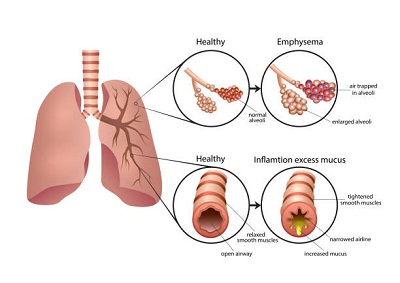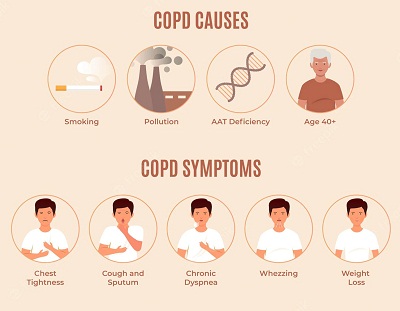COPD Medications
A variety of medicines are used to treat COPD. Each person’s COPD is different and your doctor and healthcare team will work with you to set up the best plan to address your symptoms and needs. Learn more about your treatment options
By taking the right medicine at the right time, one can:
- Breathe better
- Do more of the things, you enjoy
- Have fewer flare-ups or exacerbations
Pulmonary Rehabilitation
If you or someone you love suffers from a chronic lung disease like COPD, there is hope for rebuilding strength and enjoying a fuller, more active life. Pulmonary rehabilitation programs typically combine education, exercise training, nutrition advice and counseling.
Supplemental Oxygen
Your body needs oxygen to do everything from digesting food, daily household chores, to going to the grocery store. Sometimes with COPD, you require extra or supplemental oxygen (also called oxygen therapy).
Surgery
Some people with very severe COPD symptoms may have a hard time breathing all of the time. In some of these cases, doctors may suggest lung surgery to improve breathing. Not everyone is a candidate for lung surgery.
Clinical Trials
Clinical trials are research studies that test how well new medical approaches work in people. Each study answers scientific questions and tries to find better ways to prevent, screen for, diagnose or treat a disease. People who take part in clinical trials for COPD have an opportunity to contribute to knowledge of and progress against COPD
Complementary Therapies
Complementary therapies refer to the many therapies, philosophies and practices that are not considered conventional or standard medical care in the United States. Some examples of complementary therapy included massage, yoga and acupuncture. These techniques can’t treat COPD, but may be able to improve symptoms and quality of life.
Palliative Care and COPD
Palliative care is a specialty in medicine focused on treating the symptoms, pain and stress that accompany serious illnesses like COPD. It is available to you from the moment you are diagnosed and through the entire course of your illness. The goal of palliative care is to help you and your family, achieve the highest quality of life.



